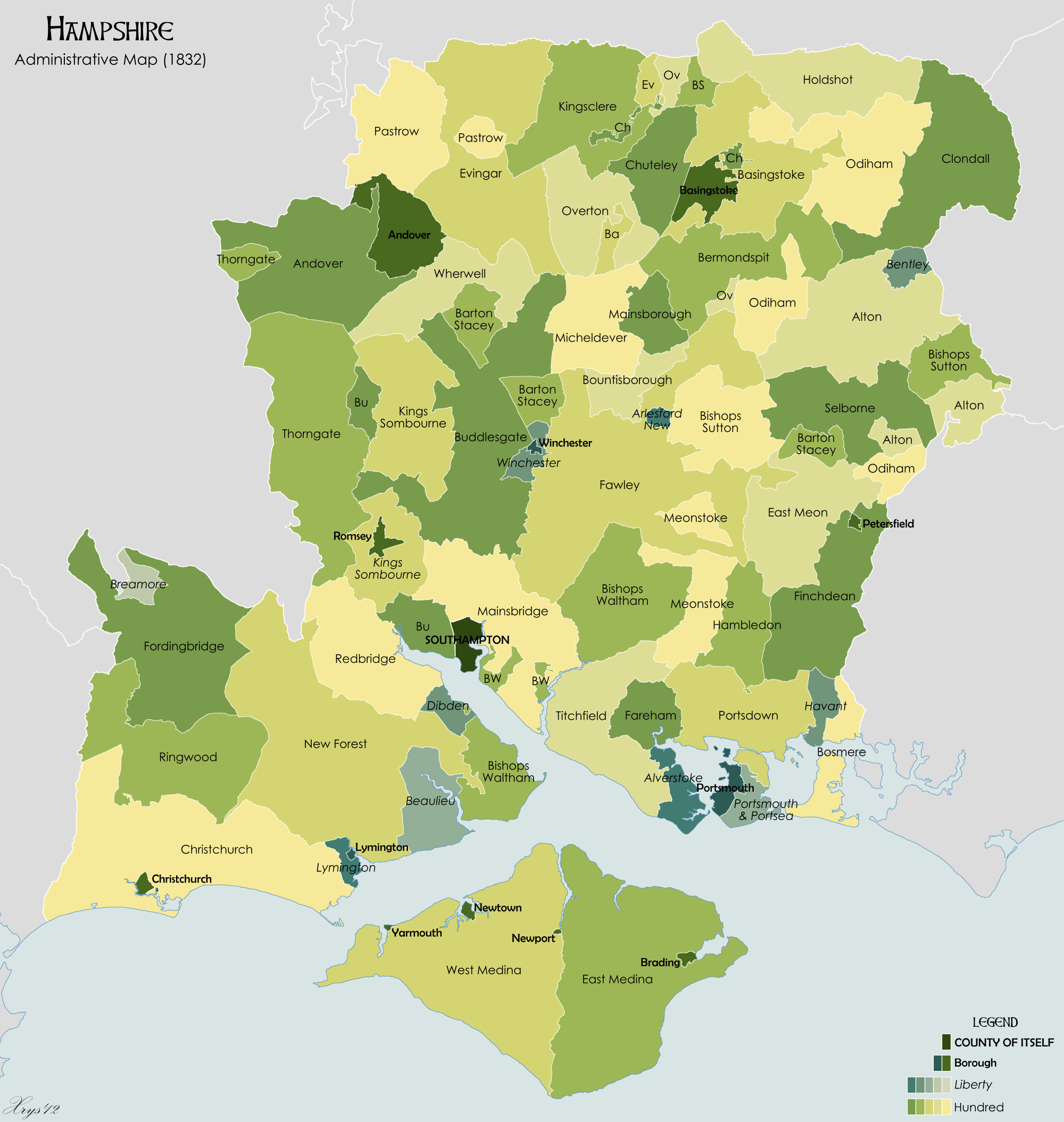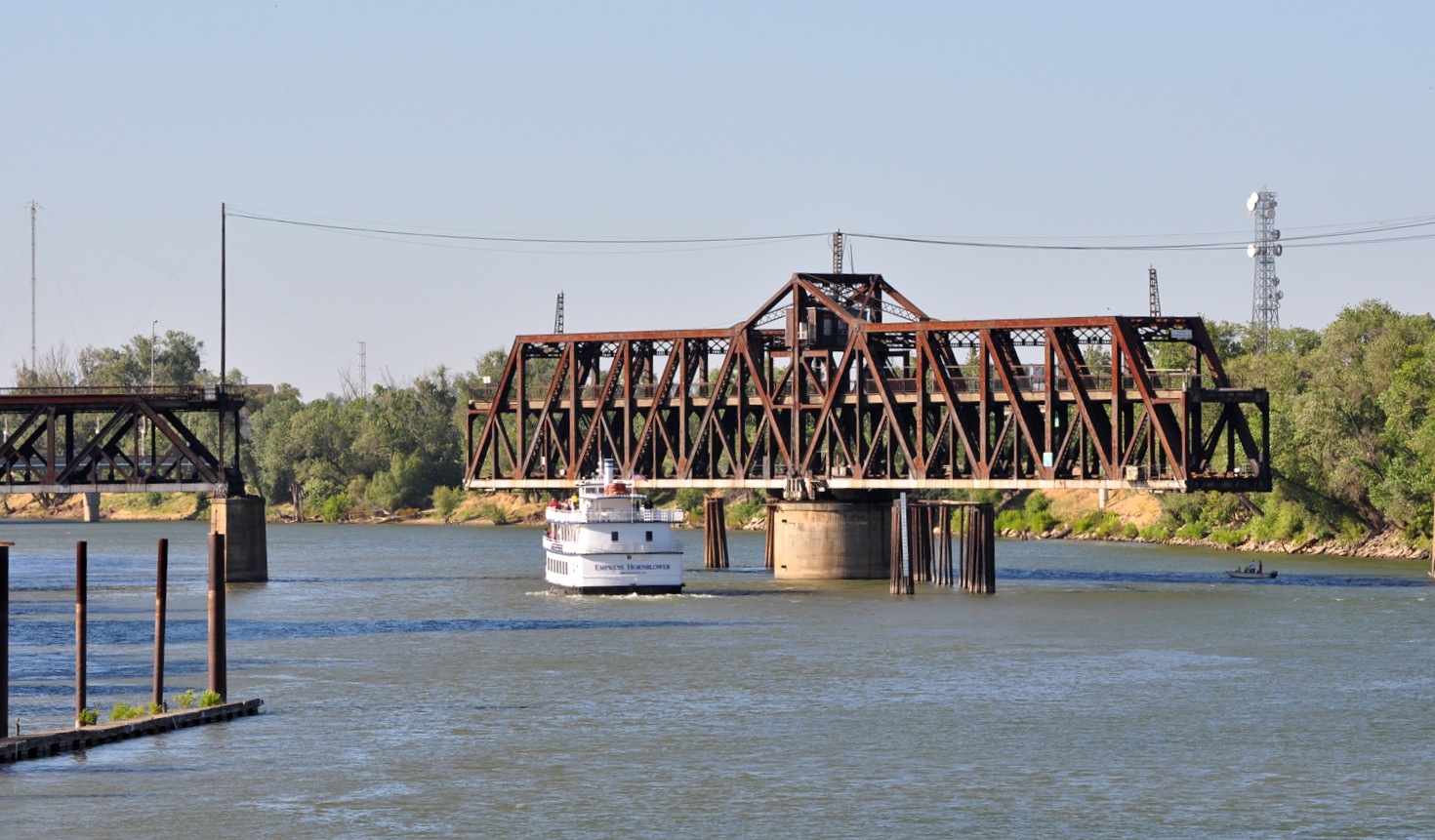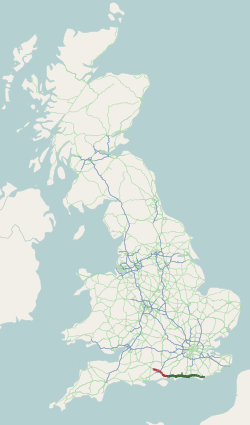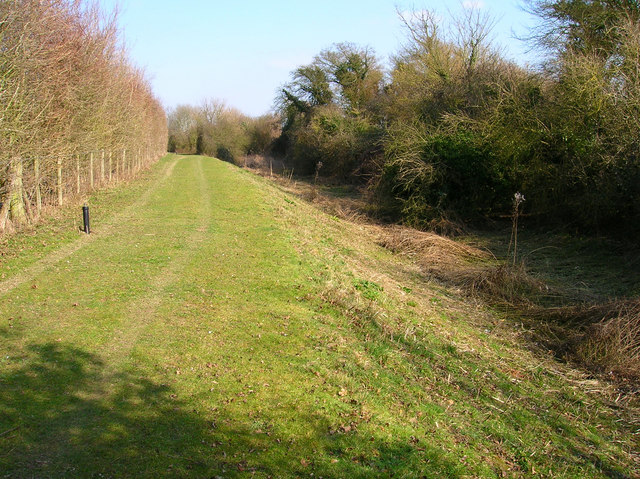|
Portsbridge Creek
Portsbridge Creek, also known as Portcreek, Portsea Creek, Canal Creek and Ports Creek, is a tidal waterway just off the southern coast of England that runs between Portsea Island and the mainland from Langstone Harbour to Tipner Lake. Through its history it has been made navigable a number of times and it is today navigable for small boats, depending on tide. History The creek and in particular the creek's crossing has been the site of defensive works possibly as far back as the reign of Henry VIII. During the English Civil War Royalist forces attempted to hold the parliamentarian forces at the creek during the early stages of the Siege of Portsmouth. Defences consisted of a wooden barricade mounted on the bridge backed by a small fort equipped with 4 guns. The guns were withdrawn on 10 August 1642 and with the barricade held by as few as 8 men the parliamentarian forces were able to cross the creek two days later. A fort at the site of the crossing of the creek turns up i ... [...More Info...] [...Related Items...] OR: [Wikipedia] [Google] [Baidu] |
Ports Creek2009
A port is a maritime facility comprising one or more wharves or loading areas, where ships load and discharge cargo and passengers. Although usually situated on a sea coast or estuary, ports can also be found far inland, such as Hamburg, Manchester and Duluth; these access the sea via rivers or canals. Because of their roles as ports of entry for immigrants as well as soldiers in wartime, many port cities have experienced dramatic multi-ethnic and multicultural changes throughout their histories. Ports are extremely important to the global economy; 70% of global merchandise trade by value passes through a port. For this reason, ports are also often densely populated settlements that provide the labor for processing and handling goods and related services for the ports. Today by far the greatest growth in port development is in Asia, the continent with some of the world's largest and busiest ports, such as Singapore and the Chinese ports of Shanghai and Ningbo-Zhou ... [...More Info...] [...Related Items...] OR: [Wikipedia] [Google] [Baidu] |
Cosham
Cosham ( or ) is a northern suburb of Portsmouth lying within the city boundary but off Portsea Island. It is mentioned in the Domesday Book of 1086 along with Drayton and Wymering (mainland) and Bocheland ( Buckland), Frodington ( Fratton) and Copenore ( Copnor) on the island. Toponymy The name is of Saxon origin (shown by the -ham suffix) and means "Cossa's homestead". Originally pronounced , since the latter half of the 20th century has become more widely used. Until the 1920s it was a separate small village surrounded by fields (including on the north end of Portsea Island). History Extensive suburban growth then expanded around the village and both east and west along the slopes of Portsdown Hill. It has been for many years a local route centre as a pinch point for buses travelling in and out of Portsmouth and offers three railway routes to London. Cosham railway station was until 1935 the terminus for City trams and trolleybuses from the south and Portsdown and Hornd ... [...More Info...] [...Related Items...] OR: [Wikipedia] [Google] [Baidu] |
History Of Hampshire
Hampshire is a county in Southern England with some notable archaeology and many notable historic buildings. The chalk downland of the South Downs and southern edges of Salisbury Plain were settled in the neolithic, and these settlers built hill forts such as Winklebury and may have farmed the valleys of Hampshire. Hampshire was part of an Ancient Britons, Ancient British kingdom the Celts called ''Gwent'' (not be confused with the Gwent (county), county in Wales) or ''Y Went'', which also covered areas that would later belong to Somerset and Wiltshire). In the Roman invasion of Britain, Hampshire was one of the first areas to fall to the invading forces. During the period of Anglo-Saxon settlement of Britain, Anglo-Saxon settlement, modern Hampshire and the Isle of Wight were occupied by Jutes, Jutish tribes – a people separate initially from the Saxons and Angles. Jutes founded kingdoms known as ''Wihtwara'' (Wight), ''Meonwara'' (Meon Valley) and ''New Forest, Ytene'' (in ... [...More Info...] [...Related Items...] OR: [Wikipedia] [Google] [Baidu] |
Swing Bridge
A swing bridge (or swing span bridge) is a movable bridge that has as its primary structural support a vertical locating pin and support ring, usually at or near to its center of gravity, about which the swing span (turning span) can then pivot horizontally as shown in the animated illustration to the right. Small swing bridges as found over canals may be pivoted only at one end, opening as would a gate, but require substantial underground structure to support the pivot. In its closed position, a swing bridge carrying a road or railway over a river or canal, for example, allows traffic to cross. When a water vessel needs to pass the bridge, road traffic is stopped (usually by traffic signals and barriers), and then motors rotate the bridge horizontally about its pivot point. The typical swing bridge will rotate approximately 90 degrees, or one-quarter turn; however, a bridge which intersects the navigation channel at an oblique angle may be built to rotate only 45 degrees, o ... [...More Info...] [...Related Items...] OR: [Wikipedia] [Google] [Baidu] |
London, Brighton And South Coast Railway
The London, Brighton and South Coast Railway (LB&SCR; known also as the Brighton line, the Brighton Railway or the Brighton) was a railway company in the United Kingdom from 1846 to 1922. Its territory formed a rough triangle, with London at its apex, practically the whole coastline of Sussex as its base, and a large part of Surrey. It was bounded on its western side by the London and South Western Railway (L&SWR), which provided an alternative route to Portsmouth. On its eastern side the LB&SCR was bounded by the South Eastern Railway (SER)—later one component of the South Eastern and Chatham Railway (SE&CR)—which provided an alternative route to Bexhill, St Leonards-on-Sea, and Hastings. The LB&SCR had the most direct routes from London to the south coast seaside resorts of Brighton, Eastbourne, Worthing, Littlehampton and Bognor Regis, and to the ports of Newhaven and Shoreham-by-Sea. It served the inland towns and cities of Chichester, Horsham, East Grinstead and Le ... [...More Info...] [...Related Items...] OR: [Wikipedia] [Google] [Baidu] |
Portsmouth City Council
Portsmouth City Council is the local authority of the city of Portsmouth, Hampshire, England. It is a unitary authority, having the powers of a non-metropolitan county and district council combined. It provides a full range of local government services including Council Tax billing, libraries, social services, processing planning applications, waste collection and disposal, and it is a local education authority. Powers and functions The local authority derives its powers and functions from the Local Government Act 1972 and subsequent legislation. For the purposes of local government, Portsmouth is within a non-metropolitan area of England. As a unitary authority, Portsmouth City Council has the powers and functions of both a non-metropolitan county and district council combined. In its capacity as a district council it is a billing authority collecting Council Tax and business rates, it processes local planning applications, it is responsible for housing, waste collection and e ... [...More Info...] [...Related Items...] OR: [Wikipedia] [Google] [Baidu] |
Retractable Bridge
A retractable bridge is a type of moveable bridge in which the deck can be rolled or slid backwards to open a gap while traffic crosses, usually a ship on a waterway. This type is sometimes referred to as a thrust bridge. Retractable bridges date back to medieval times. Due to the large dedicated area required for this type of bridge, this design is not common. A retractable design may be considered when the maximum horizontal clearance is required (for example, over a canal). Two remaining examples exist in New York City: the Carroll Street Bridge (built 1889) in Brooklyn, and the Borden Avenue Bridge in Queens. A recent example can be found at Queen Alexandra Dock in Cardiff, Wales, where the bridge is jacked upwards before being rolled on wheels. Helix Bridge at Paddington Basin in London is a more unusual example of the type, consisting of a glass shell supported in a helical steel frame, which rotates as it retracts. The Summer Street Bridge over Fort Point Channel in B ... [...More Info...] [...Related Items...] OR: [Wikipedia] [Google] [Baidu] |
A27 Road
The A27 is a major road in England. It runs from its junction with the A36 at Whiteparish (near Salisbury) in the county of Wiltshire, follows the south coast of Hampshire and West Sussex, and terminates at Pevensey (near Eastbourne and Bexhill) in East Sussex. It is the westernmost road in Zone 2 in the UK road numbering system. Between Portsmouth and Lewes, it is one of the busiest trunk roads in the UK. History Historically, for longer distance movement along the south coast, the M25 in combination with the M2, M20, M23 / A23, A3 / A3(M) and M3 has provided an attractive alternative to the actual south coast route of A259, A27 and M27. In 2002 an offpeak journey between Margate and Southampton via the M25 took 2 hours 30 minutes, and via the coastal route using the A259, A27 and M27 took 3 hours 50 minutes. The reason the coastal route is so much slower than the M25 alternative is largely due to a series of bottlenecks on the A27. These include Chichester, Arundel, ... [...More Info...] [...Related Items...] OR: [Wikipedia] [Google] [Baidu] |
Hilsea Lines
The Hilsea Lines are a line of 18th- and 19th-century fortifications built at Hilsea to protect the northern approach to Portsea Island, an island off the southern coast of England which forms the majority of the city of Portsmouth and its key naval base. They are now used as a greenspace and leisure area, also known locally as ''Foxes Forest''. Natural defences The island is separated from the mainland by a narrow stretch of water called Portsbridge Creek. The first means of crossing the creek was by stepping stones, followed by a single track bridge, built to allow the passage of pedestrians and horse-drawn carts to have access to Portsea Island. Early defences Early defences were focused on the 'Portsbridge' that crossed the creek. A fortification is thought to have been built at the mainland end of the bridge during the reign of King Henry VIII. In 1642 the fort was captured by parliamentary forces as part of the English Civil War. It was rebuilt in 1688 and again in 1746. D ... [...More Info...] [...Related Items...] OR: [Wikipedia] [Google] [Baidu] |
Portsea Canal
The Portsmouth and Arundel Canal was a canal in the south of England that ran between Portsmouth and Ford in the Arundel district, it was built in 1823 but was never a financial success and was abandoned in 1855; the company was wound up in 1888. The canal was part of a larger scheme for the construction of a secure inland canal route from London to Portsmouth, which allowed craft to move between the two without having to venture into the English Channel and possibly encounter enemy ships or natural disaster. It was built by the Portsmouth & Arundel Navigation company. The canal was made up of three sections: a pair of ship canals, one on Portsea Island and one to Chichester, and a barge canal that ran from Ford on the River Arun to Hunston where it joined the Chichester section of the canal Ford to Hunston Section This section of the canal connected the river Arun at Ford to the junction with the Chichester arm of the canal. It had two locks at Ford to allow the canal to drop ... [...More Info...] [...Related Items...] OR: [Wikipedia] [Google] [Baidu] |
A Plan And Profiles Of Portsea Bridge Fort As Erected Anno 1747
A, or a, is the first letter and the first vowel of the Latin alphabet, used in the modern English alphabet, the alphabets of other western European languages and others worldwide. Its name in English is ''a'' (pronounced ), plural ''aes''. It is similar in shape to the Ancient Greek letter alpha, from which it derives. The uppercase version consists of the two slanting sides of a triangle, crossed in the middle by a horizontal bar. The lowercase version can be written in two forms: the double-storey a and single-storey ɑ. The latter is commonly used in handwriting and fonts based on it, especially fonts intended to be read by children, and is also found in italic type. In English grammar, " a", and its variant " an", are indefinite articles. History The earliest certain ancestor of "A" is aleph (also written 'aleph), the first letter of the Phoenician alphabet, which consisted entirely of consonants (for that reason, it is also called an abjad to distinguish it fro ... [...More Info...] [...Related Items...] OR: [Wikipedia] [Google] [Baidu] |




_railway_bridge_over_Battersea_Park_Road%2C_SW8.jpg)



